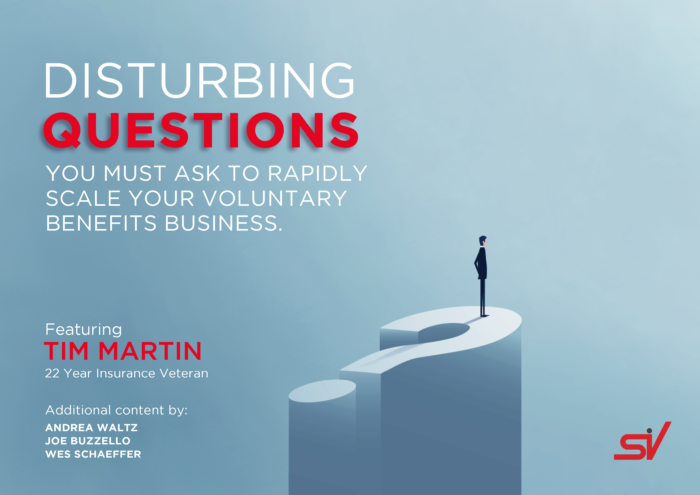All We Sell Is A Promise
Make sure you can back it up...
There is a world of difference between selling tangible goods and intangible concepts. I have hired and trained over 2,000 Voluntary Benefits (VB) salespeople over the last 16+ years and many of them came from a background of selling tangible things such as cars, real estate, computers, copiers, etc. For the most part, they struggled (at first) with making the transition to selling the intangible.
If you sell tangible items, you can get your client to activate many of their senses by having them interact with the product. Why do you think they are so eager to get you on a test drive at the car lot? They know that once you get behind the wheel you will have the opportunity to engage all five senses.
- Sight: You probably will pick the car you want to drive based upon color and style.
- Smell: Is there anything as wonderful as that first whiff of new car smell you experience when you get in?
- Touch: Undoubtedly your hands will caress the supple leather of the seats and you will feel the power of the acceleration as you mash on the accelerator.
- Sound: Wow! The stereo in this thing is better than the one back at your place. You are tempted to crank it way up, but you want to listen to see how much road noise you can hear.
- Taste: Smart car lots have snacks and refreshments in the showroom. They don’t do this to be nice to their customers. They know that if you enjoy a snack while you are there, your perception of your experience increases dramatically and it puts you in a good mood to buy.
All we are selling in the VB arena is a promise. I used to say we sold paper with a promise written on it. But now most carriers deliver their policies electronically via email. The customer has to use their own paper.
If it is true that all we sell is a promise, then how important is it that the customer believes the person making the promise? It is critical! The real challenge we face is that oftentimes we have to meet, build report, gain trust, make the sale, and fill out the necessary applications and forms all within a 15-30 minute time frame. So how are we going to do that? I think there are 8 things that, if you do right, can offset the lack of a tangible product for our customer to interact with. As you read these 8 techniques, notice how little presenting you should be doing. Remember, the more they talk… the smarter you are and the more they like you!
- Ask them questions about their life – Do they have kids? Are they saving for a house? Have they recently gotten married? What kind of health issues are they concerned about?
- Ask them questions about their financial health – If they got sick or hurt and couldn’t work, how long would it be before that affected their family?
- Ask them about their history – Have they ever had anyone in their life that has been affected by cancer? What did that look like for that person and their family financially?
- Ask them about their future – How are they going to help put their kids through college if something bad happens?
- Tell them a story (or two) – My favorite adage in this business is, “Benefits tell, stories sell.” If they are on the fence, tell them another story. Don’t overwhelm them with more product information. Illustrate the need for your product by telling a story about a claimant that had your program and how it helped them.
- BRIEFLY show them the brochure – Now is the time to BRIEFLY explain how the policy works. By BRIEFLY covering the features in the brochure you can anchor the story you just told to the printed materials you are showing them. Did I mention to keep if BRIEF?
- Reduce to the ridiculous – It is important that they understand how affordable your coverage is. Even the highest level of coverage you carry is probably less than the cost of going to Starbucks a few times a week.
- Ask them to buy – I’m not sure I should share my “super-secret, proprietary, devastatingly effective” closing line. I mean it took me years of hard work to perfect. To just give it away seems a little foolish, but I’ll do it anyway. You have to promise me though that you will do something nice for me. If you like this technique and find that it works for you, would you please subscribe to my podcast on iTunes and rate it? O.K. I think I have built it up enough. Here it is: “Are you comfortable with that?” Maybe it is too subtle for you. Let me say it again, “Are you comfortable with that?” If they say they are comfortable, shut up, stop selling, and start filling out the application. If they hem and haw about it, tell them another story, perhaps back them down to a lower level of coverage, show them the new price and ask them my other “super-secret, proprietary, devastatingly effective” closing line, “Is that a little more comfortable for you?”
Conclusion:
If you want to get people to buy your promise, they have to buy you!
Question:
The procedure above only gets 2 senses involved in the sale (sight and sound). How might you get the other 3 senses involved? Comment below!



